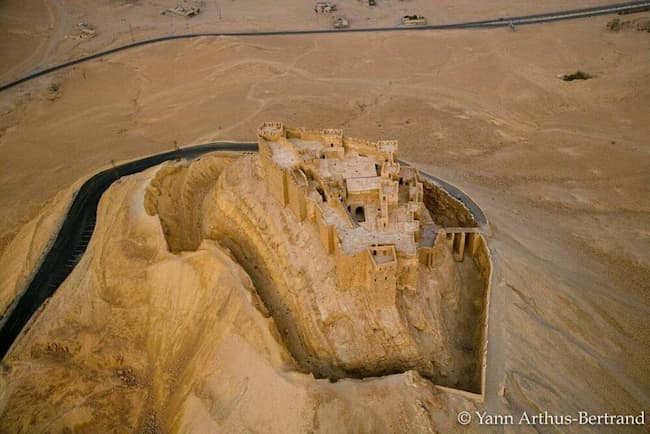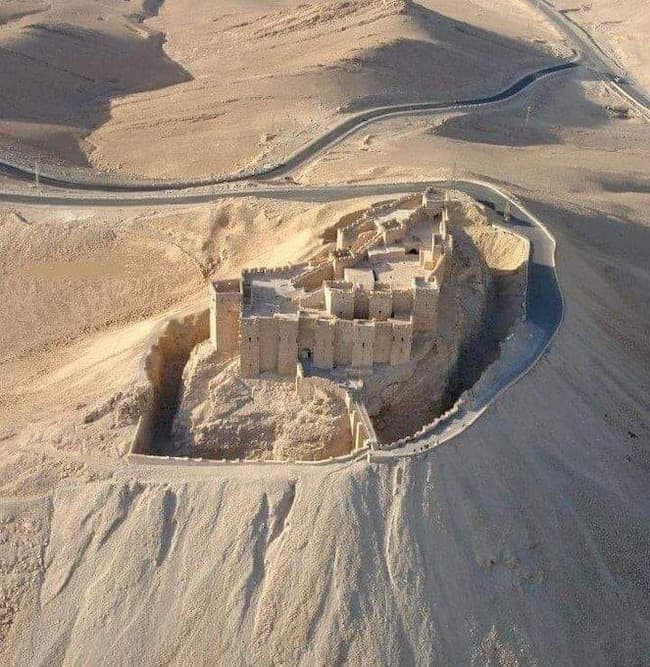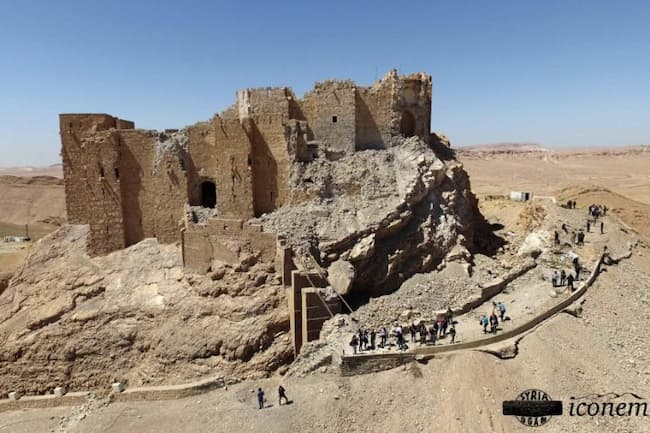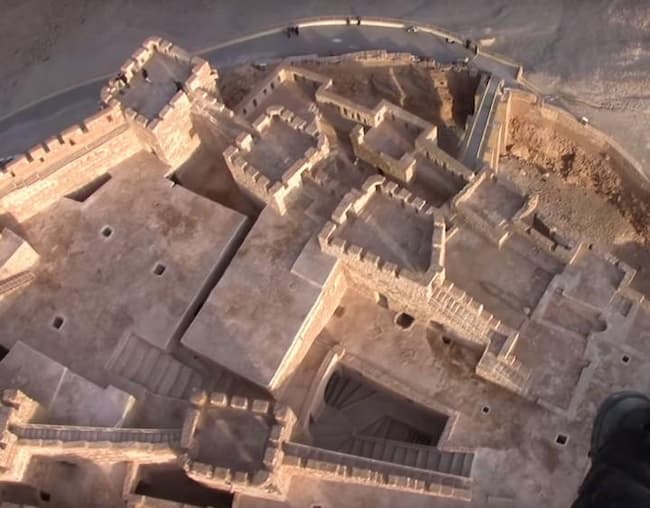That Palmyra Castle, which is located in Syria, was built during the 13th century CE. The castle is an important historical and cultural site, as it has played a significant role in the history of the region and has been the site of numerous battles and conflicts. The castle’s construction and design are also of interest to archaeologists, historians, and anyone interested in medieval architecture.

Palmyra is an ancient archaeological site located in modern-day Syria. Originally founded near a fertile natural oasis, it was established sometime during the third millennium B.C. as the settlement of Tadmor, and it became a leading city of the Near East and a major trading post on the Silk Road. The architecture of Palmyra combined Greco-Roman styles with those of Persia and Arabia, and the ruins that remain have significant cultural and historical significance. Recently, however, its treasures have been at risk due to the ongoing civil war in Syria.

For a time, the so-called Islamic State or ISIS controlled the region around Palmyra, and some of the ruins at the site were destroyed.
The Syrian government retook the area in March 2016, and the ancient site—which has survived multiple wars and strife—remains a key historical and cultural treasure. Palmyra was named a UNESCO World Heritage Site in 1980.
Located more than 100 miles northeast of Damascus, the present-day capital of Syria, Palmyra began during the Stone Age as a small settlement near an oasis in the desert.
The area was surrounded by fertile soil and date palm trees, fed by a series of springs originating at the al-Qubur wadi (Arabic for riverbed). The springs and rich soil made Palmyra ideal for farming and herding.

The name Palmyra is believed to be the Latinized form of the original Arabic name of Tadmor, which is related to the word for “date palm.”
Started as a Mesopotamian settlement, Palmyra was controlled by the Arameans from the second millennium B.C., before Arabs arrived in the first millennium B.C.
Interestingly, the Arabs assimilated with the city’s existing population and are said to have spoken the local dialect of Palmyrene. There was also a significant Jewish population in Palmyra.

Rome Conquers PalmyraIn 64 B.C., the Roman Empire conquered Syria, and thus Palmyra. However, the city was left largely autonomous and became a significant trading partner with Rome.
However, in 14 A.D., Palmyra was conquered by Emperor Tiberius, and thus was fully under Roman rule. This lasted for roughly two centuries with the onset of the Persian wars.
The Persians established their control over Palmyra in the second century A.D. During the struggle for control, the first city of Palmyra was destroyed by the Roman emperor Aurelian in 273 A.D., although it was eventually rebuilt.
For the next 400 years, Palmyra fell under the sway of the Romans (again) and the Byzantine Empire, the latter of which established it as a Christian city.
From the early 600s onward, though, the city was ruled by various Arab caliphates. The great city remained a significant trading post on the Silk Road, linking present-day Asia and Europe, until it was destroyed by Timurid warlords in the early 1400s.
Palmyra RuinsThe early settlement of Palmyra began around the Efqa spring on the northern side of the Al-Qubur wadi, and that’s where many of the site’s significant ruins remain.

These include the Temple of Bel, built for worship of the Mesopotamian god Bel, and the Great Colonnade, or main thoroughfare of the city. The site also features remains of other temples, residences, and a Roman-style theater.
There is also evidence of the ancient city’s “Damascus Gate”—an entrance to the walled community, directed toward the Syrian capital—as well as what is believed to have been a senate meeting house and court building.
Because Palmyra, throughout its history, fell under the control of multiple empires and cultures, its architecture combines many elements of Greek, Roman, Aramean and Arab styles, making it all the more significant to archeologists and historians.
Palmyra Under ISISDuring the Syrian Civil War—which began in 2011—the so-called Islamic State, or ISIS, took control of the region surrounding Palmyra and declared it part of a caliphate, or state under Islamic rule.
In 2015, media reports suggested that ISIS militants had destroyed several important statues at Palmyra, including the Lion of Al-lat, which decorated the entrance of a temple of same name that had been built in the first century A.D. A few months later, they reportedly destroyed the remains of the Temple of Baalshamin, before tearing down the ruins of the inner chamber of the Temple of Bel, though the building’s outer walls and entrance arch remain standing.
In addition to destroying the remains of multiple tombs, ISIS also tore down parts of the Tetrapylon as well as the city’s ancient theater.
When the Syrian government recaptured Palmyra in March 2017, with the assistance of Russian airstrikes, observers noted that the damage sustained to the site may not have been as severe as originally believed. Restoration work has already begun, and notable antiquities, such as the Lion of Al-lat, have already been repaired.
Unfortunately, the treasures of Palmyra were not the only casualties of the ISIS occupation.
Noted Syrian historian Khaled al-Asaad, an unofficial caretaker for the site, was interrogated by ISIS militants for more than a month but refused to tell them where its main treasures were located. They beheaded him and hung his mutilated body on a column in the city’s main square.

